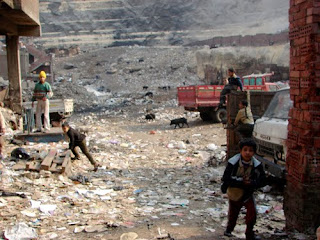Increasing children poor living conditions Egypt
The number of children living in income-poor households is increasing, causing poorer living conditions and a greater deprivation of their rights as children.
Entitled Child Poverty and Disparities in Egypt, and released on 16 February in Cairo, the report said Egypt’s economic growth in the years leading up to the 2009 financial crisis had not adequately benefited the nation’s estimated 28 million children.
“This growth has not led to a proportionate reduction in income poverty or deprivation,” said the study, which is part of a global series of UNICEF studies on child poverty and disparities.
Economic growth is often seen by commentators as failing to keep up with Egypt
The report said 23 percent of children under 15 were living in poverty (on less than US$1 a day) and that income poverty was highly correlated with shelter deprivation.
It said more than a quarter of Egyptian children (seven million) were deprived of one or more of their rights under the 1989 Convention on the Rights of the Child, ratified by Egypt. Around five million children were deprived of appropriate housing, including shelter, water and sanitation standards; and 1.6 million under fives
experienced health and food deprivation.
“It’s important to look at how poverty affects children’s lives and how we can address it,” Sigrid Kaag, UNICEF regional director for the Middle East and North Africa, said at a gathering to discuss the new study. “A child who lives in poverty rarely gets a second chance at education or a healthy start in life.”
She called on the government to introduce special laws for the protection of children
Rural areas worse
The poverty rate among children in rural areas was more than double that in urban areas, and much higher in the south than in the north, according to the study. The south, known as Upper Egypt , had the highest incidence of poverty among children - 45.3 percent.
Girls and boys were equally vulnerable to poverty and deprivation of rights, but girls in rural areas were the least likely to attend school or complete their education, thus increasing the likelihood of them being poor in adulthood.
The study recommended that policies be directly aimed at children to alleviate their poverty.









0 التعليقات:
Post a Comment